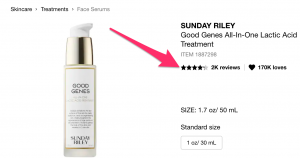Brands need to understand the incrementality of each click and then optimize their bids.
Unless you have been living under a rock or are one of 10 people who still consider e-commerce is a fad, you know about the explosive growth Amazon has seen in the last decade. But very few people have fully comprehended Amazon’s maniacal focus on chasing profitability in the last few quarters. To boost profitability, Amazon is steadily shifting its model from a retailer to a marketplace. For the first time in its history, over 50 percent of all sales on Amazon were driven by more profitable third-party sales, where Amazon takes a healthy cut. Also, to boost its bottom line, Amazon aggressively CRAPs out SKUs (CRAP is an endearing Amazon acronym for Cannot Realize Any Profit, where Amazon’s algorithms suppress and kick out unprofitable SKUs from its platform.)
But Amazon’s advertising division has so far flown under the radar. For the first time in its history, Facebook publicly acknowledged Amazon as a direct competitor in the advertising world in its last earnings call, and it has good reasons to be scared — very very scared.
“We compete with Apple in messaging, Google and YouTube in advertising and video, Tencent in messaging and social media, and Amazon in advertising.” – Facebook Annual 10K filing
This is the first time Facebook called out Amazon in its earnings, and it demonstrates the growing importance of Amazon in digital advertising dominated by the two behemoths.
Ten years ago, few people thought Facebook would challenge Google and become an advertising behemoth. I will be the first person to raise my hand and say I was utterly wrong when I recommended my company then to cut back advertising investment on Facebook because the ROI wasn’t there. Brands that latched on to the social media phenomenon that unfurled since then reaped a lot of benefits while it was still cheaper to advertise on Facebook. It’s no more. We are now at the same juncture with Amazon. Bid density is still low and the upside is huge. But there is one fundamental difference which many marketers ignore and that is critical to note….
AMAZON IS A RETAILER FIRST AND THEN AN ADVERTISER. At the most basic level, Google is a search engine, Facebook is a social network and Amazon is an online marketplace. On Google and Facebook, people are searching for something not always a product though. This distinction from Google and Facebook is critical. When you click on an ad on Google or Facebook, attributing the impact of that click on sales is still difficult, but you go to Amazon with clear intention of buying products and when you click on a sponsored product ad on Amazon, you land on the product detail page with a big check out box. The attribution is clear because it is a closed system. Another fundamental difference is the interplay between marketing spend and organic search results on Amazon. Traditional agencies and large brands do not understand that critical distinction, and this is where brands can create a lasting competitive advantage on Amazon. That one click on an ad can not only impact an immediate paid sale but can also positively turn and accelerate the Amazon flywheel and improve your organic search ranking. So brands that take a jumpstart against competition in strategically buying paid placements to grow organic search ranking on consumer searches can dominate page one for a long period without the need for increasing ad budget forever.
Optimization on Amazon is largely focused on hitting a target advertising cost of sales or ACoS (which is nothing but how much money you spend to get $1 in paid sales). But this like using advertising as a drug which you can’t wean away from. Not every click or ad on Amazon is the same. Rather than a peanut butter approach of a target ACoS, brands need to understand the incrementality of each click and then optimize the bids. That means you should be willing to pay more for a click to convert a net, new customer into a sale than a click where the consumer has already made up his mind to buy your product. You can capture this signal based on what keyword consumers are searching for – branded, category or competitor.
Taking this a step further, you should be spending less on search terms where you are already getting the lion’s share of top search results organically and invest them in searches where your organic presence is low. Finally, it is important to ensure that you have profitability of investment in mind. Why chase a highly expensive search term and engage in a bid war with competitors when you can programmatically identify a bunch of long tail inexpensive search terms and own them.
Amazon is clear in its priorities: End customers will always take the cake, followed by growth and profitability. Their investment in high margin advertising business is a way to improve the profitability of their retail operations. But they do not lose customer focus even in advertising by ensuring that products with good conversion, minimum ratings and reviews and relevancy get preference. The success of individual brands is not in their top three priorities so brands need to programmatically cut back on wasteful ad dollars and reinvest them in high growth opportunities to drive incremental sales rather than a vanity efficiency metric like advertising cost of sales.
Opinions expressed in this article are those of the guest author and not necessarily Marketing Land. Staff authors are listed here.
Marketing Land – Internet Marketing News, Strategies & Tips
(57)





